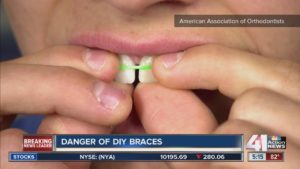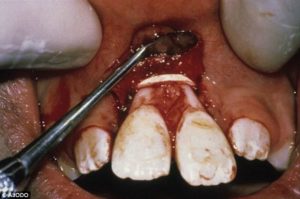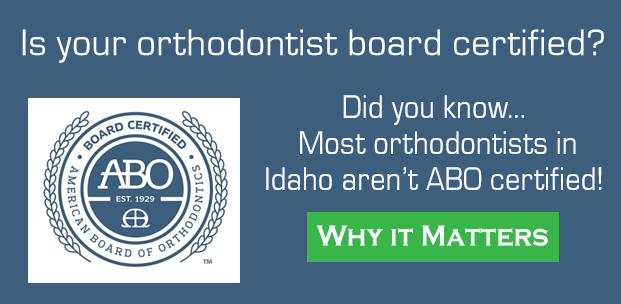The concept of “Do It Yourself” (DIY) work has been around for a long time. Few things are more satisfying than completing a job well done, and saving money while doing it. For many household tasks, one can research the topic online and within a matter of minutes, have a general idea of how to do it. For DIY work, one must weigh the potential risks of a poor outcome to the money saved. For example, if you decide to repair a leaking faucet on your own, you will save the cost of hiring a repairman, and the risk is minimal – at worst, the faucet will continue to leak. On the other hand, if you decide to replace the timing belt on your car, you will save the cost of hiring a mechanic but the risk of not doing it correctly would result in ruining the engine – which is more expensive to repair than originally hiring it out.
A recent trend in the orthodontic world is the concept of DIY braces. There are two different approaches that are being used:
 Some are using household materials like rubber bands and paperclips to move their teeth. Without a basic knowledge of how teeth respond to force and movement, damage can occur to the teeth and/or boney support. Using materials not designed for orthodontics is never advisable. Not only does one introduce potentially harmful materials and chemicals into the mouth, but also significant complications from doing this DIY treatment have occurred which can result in irreparable damage. The money saved by doing it this way does not outweigh the potential risks of damaging the teeth.
Some are using household materials like rubber bands and paperclips to move their teeth. Without a basic knowledge of how teeth respond to force and movement, damage can occur to the teeth and/or boney support. Using materials not designed for orthodontics is never advisable. Not only does one introduce potentially harmful materials and chemicals into the mouth, but also significant complications from doing this DIY treatment have occurred which can result in irreparable damage. The money saved by doing it this way does not outweigh the potential risks of damaging the teeth.
- Others are utilizing kits from companies that provide the materials without professional supervision. The general process for this type of treatment requires the patient to send the company an impression or scan of the teeth. From this impression, the company fabricates clear plastic aligners that are supposed to straighten the teeth.
 Theoretically, this can align the teeth, as long as certain conditions are met. These aligners are not efficient at correcting specific problems and should be limited to simple problems. If you’re in interested in attempting this approach, it is advisable to see your orthodontist/dentist to see if you are a good candidate. This can be significantly less expensive than having a professional do the work for you as long as the treatment is effective. The risk is that if you are not a good candidate for this type of treatment, you’ll have paid thousands for unsuccessful orthodontics and only to have to pay again for a doctor to complete the work.
Theoretically, this can align the teeth, as long as certain conditions are met. These aligners are not efficient at correcting specific problems and should be limited to simple problems. If you’re in interested in attempting this approach, it is advisable to see your orthodontist/dentist to see if you are a good candidate. This can be significantly less expensive than having a professional do the work for you as long as the treatment is effective. The risk is that if you are not a good candidate for this type of treatment, you’ll have paid thousands for unsuccessful orthodontics and only to have to pay again for a doctor to complete the work.
When is comes to the health of your body and teeth, it’s best to minimize your risk while ensuring the best possible outcome. If you are interested in correcting your teeth/bite using a DIY method, see an orthodontist to find out if this treatment is right for you.


Comments are closed.